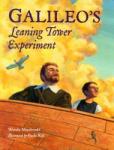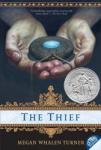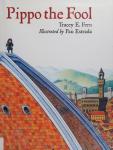What's New
Saint Clare of Assisi
Illustrator(s):
Mary Joseph Peterson, FSP
With warm, cute illustrations, and accessible language, the courageous story of Saint Clare comes alive in this little book! Young readers will be captivated by the story of a girl who gave up everything for the love of God! Her many miracles, her life in poverty, the love she had for Saint Francis and her sisters: it is all in there.
A final chapter explains how the order grew and subsequent decisions made about it-- for instance the changing of its name to the Order of Saint Clare in 1263. There are also a beautiful prayer and a glossary for terms that may be unfamiliar to young readers.
The Beautiful Story of Jesus
Translator(s):
Marianne Lorraine Trouve', FSP
This is the second book by the French author Maite Roche I review for Love2Learn. Her illustrations are simply wonderful: simple, colorful, kid-friendly, warm, adorable, and yet with plenty of detail! In this volume she is able to retell the life of Our Lord for children and readers will find there most of the important events of His life on this world. From the Annunciation to Pentecost, the text will lead the child to all of the highlights of Jesus' life. The main events of His life are there, and also the Sermon on the Mount, the Multiplication the Bread, and more.
Gregor Mendel
Regarding the scientific life of Gregor Mendel, there’s not much to tell. He grew up desperately poor and sought the priesthood to escape the robata system of farming. After carrying out his now famous experiments, the significance of which not even the best scientific minds of the day could grasp, he became abbot of the St. Thomas friary, a position whose demands prevented further scientific endeavors.
Mawer tells Mendel’s story and gives the details, but only enough to give us a sense of Mendel the scientist.
Galileo's Leaning Tower Experiment
Illustrator(s):
Paolo Rui
Science readers are to be found if you look around enough as this book demonstrates. It is the fictional story of Massimo, a boy who regularly throws his uncle's lunch off a bridge to his boat as his uncle rows by below. Galileo happens to see that the bread and the cheese land at the same time. The story ends atop the leaning Tower of Pisa, as legend suggests Galileo did.
Charles and Emma
I learned a few things from this young adult book about the life of Charles Darwin after his adventures on the H.M.S. Beagle. The book is based on his and his wife’s diary entries and because Charles was the more prolific writer we have more of his insights than Emma’s. The quoted material is more of a sprinkling than a basis for the book so it is mostly the author’s interpretation rather than their actual words.
Charles was agnostic from the start.
A Shepherd in Combat Boots
What makes a hero? In our modern society, we often associate heroes with professional sports. Some "famous" player leaps into the air making an unbelievable catch in the final moments of a game resulting in national attention. But there is another kind of hero, the quiet, unsung hero, someone who selflessly places himself in harms way to save the life of another. Fr. Emil Kapaun is one such hero.
Father Emil Kapaun deserves more than recognition, honor, and respect. He deserves to be emulated.
A Story of Saint Elizabeth of Hungary
Illustrator(s):
Carolyn Lee Jagodits
In this charming, simple story, we are introduced to St. Elizabeth, beginning with her birth and covering her complete life. Clearly, the style is written for younger children. "She was born in a big castle in Hungary way back in 1207--a long, long time ago!" Although the story is written for younger children, the language and storyline are not watered down, touching on the important events in her life as well as addressing the problems she encountered.
The Queen's Thief Series (The Thief, The Queen of Attolia, The King of Attolia, A Conspiracy of Kings)
If you, like us, have voracious readers always eager for, sometimes demanding, new reading material, Margaret Whalen Turner’s Queen’s Thief series is definitely worth a try. Set in a fictionalized version of Greece in something like the sixteenth century, the series continually reveals Mrs. Turner’s love for Greece, its landscape, mythology, learning and even politics.
The stories are set in three small adjoining countries, Sounis, Eddis and Attolia.









